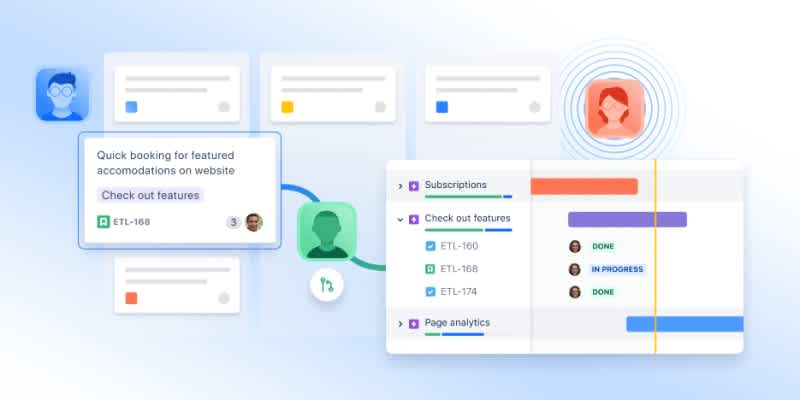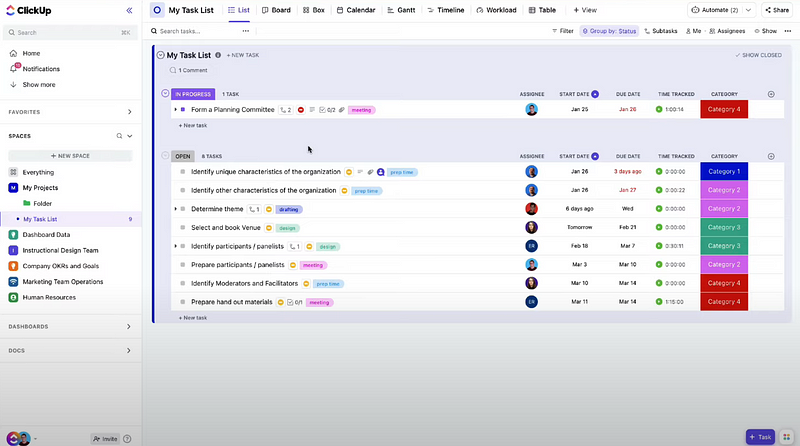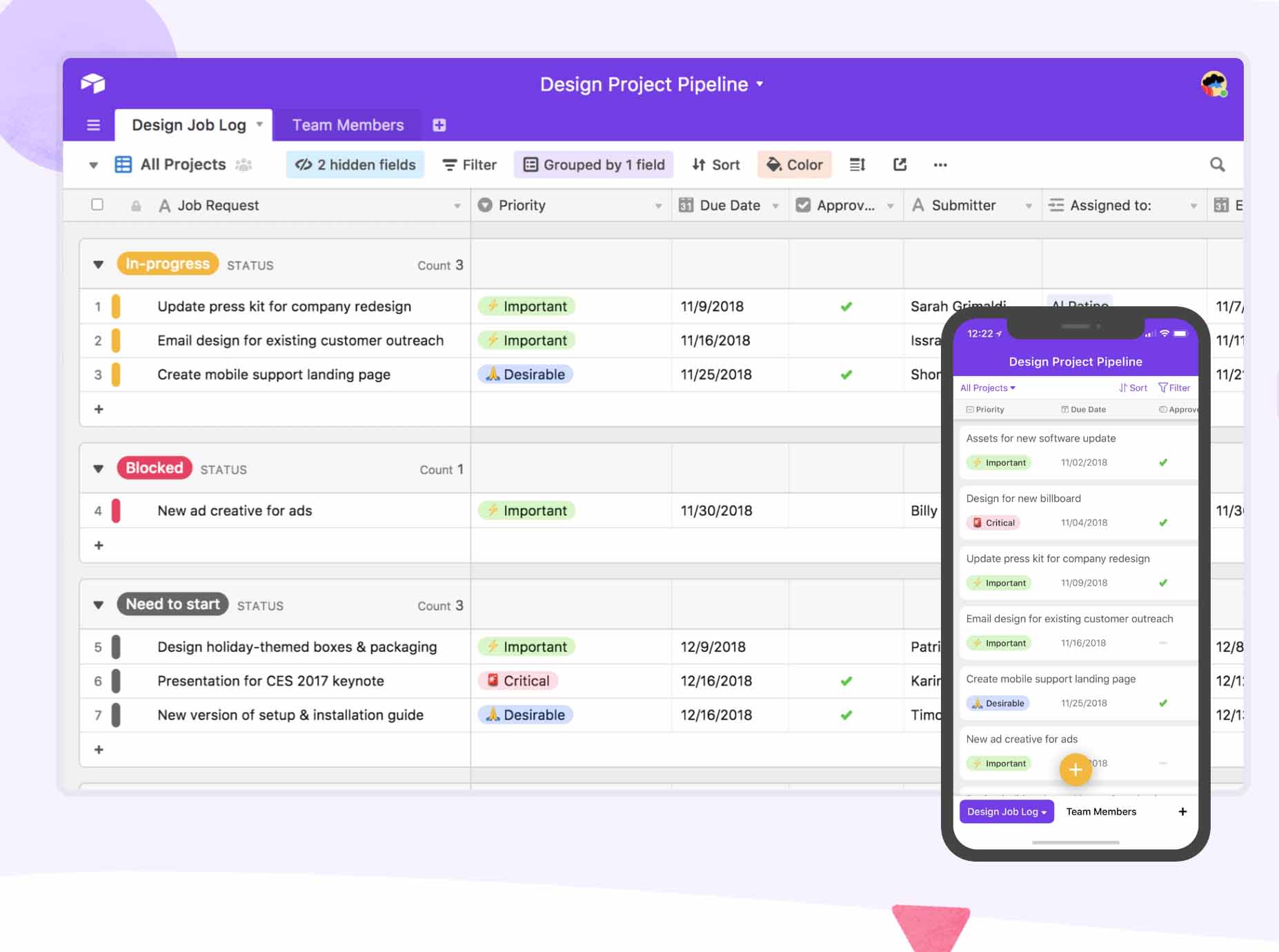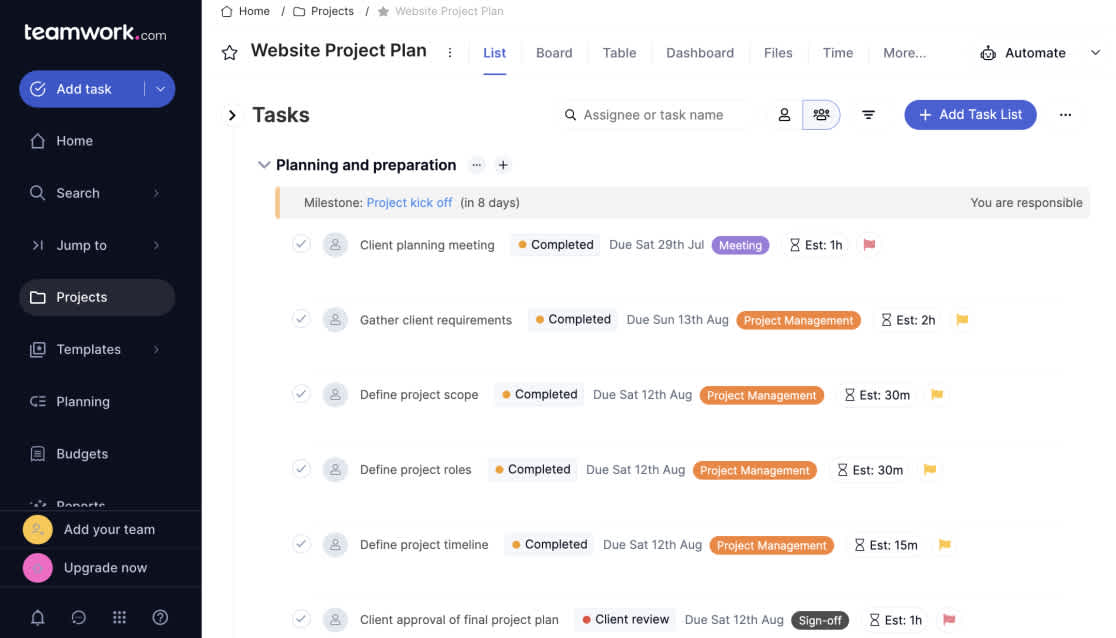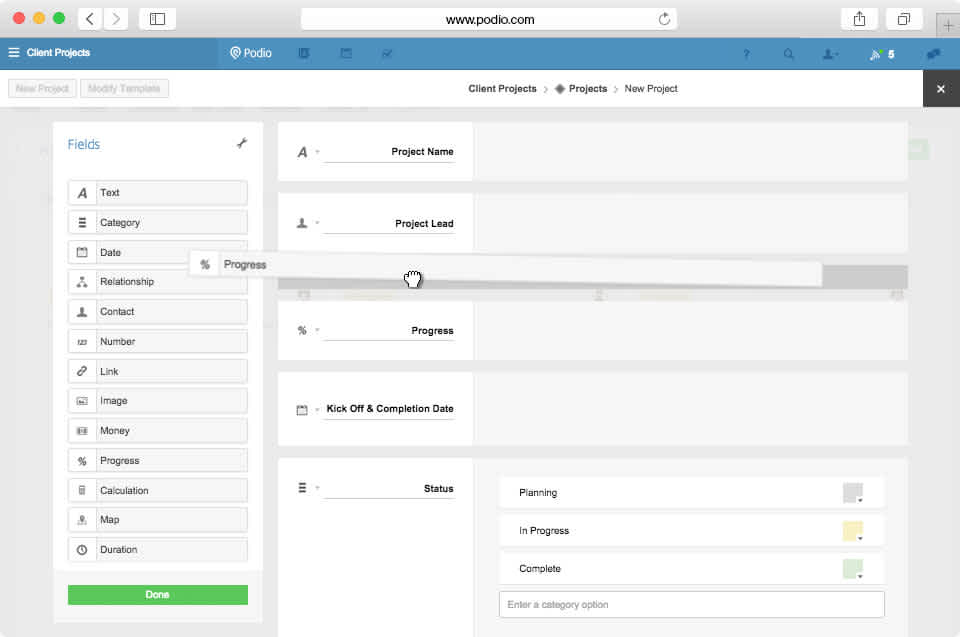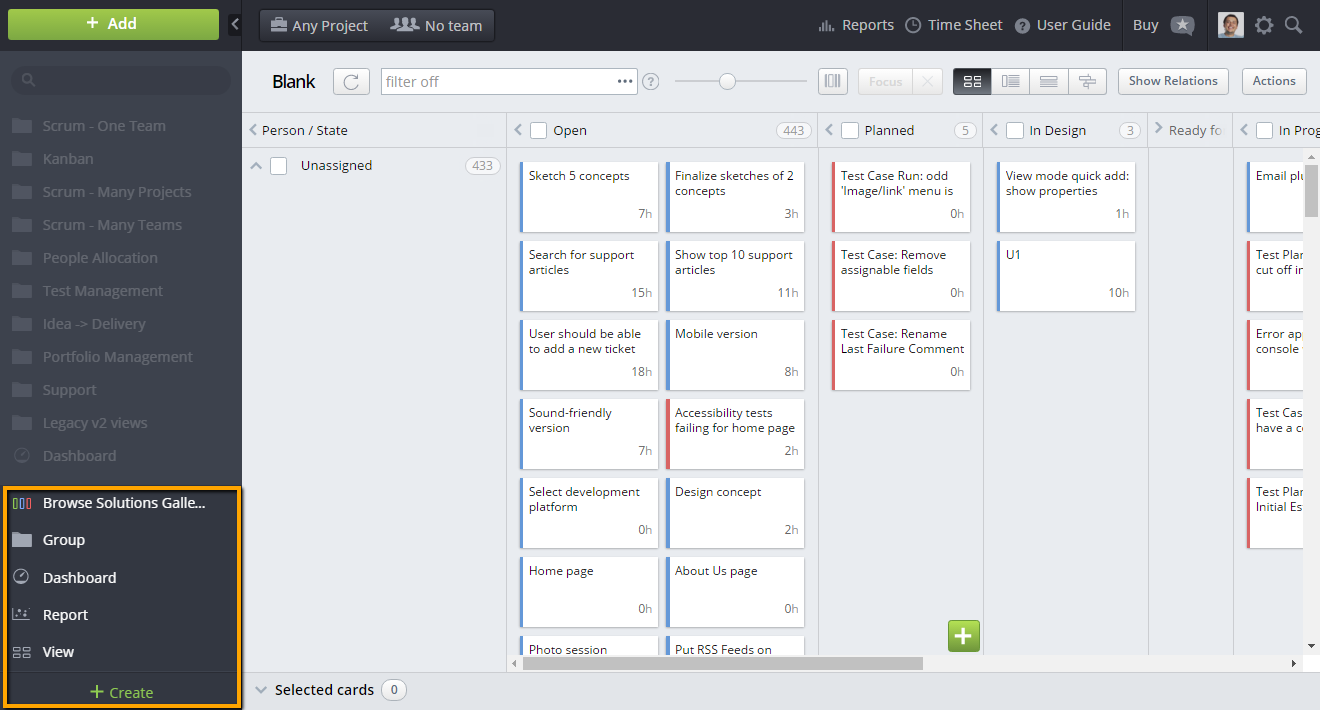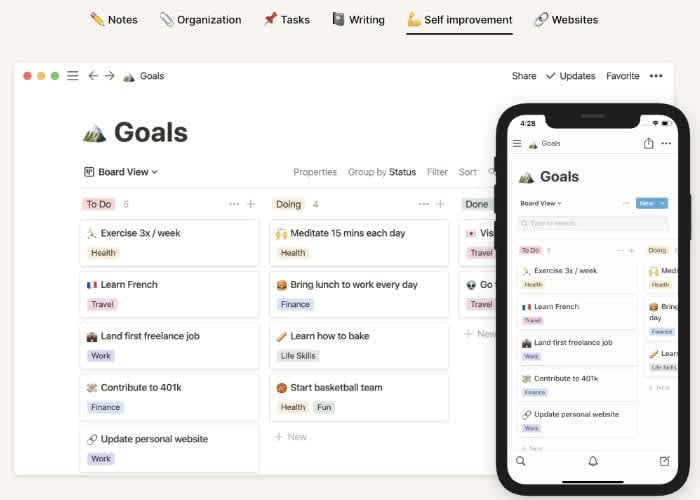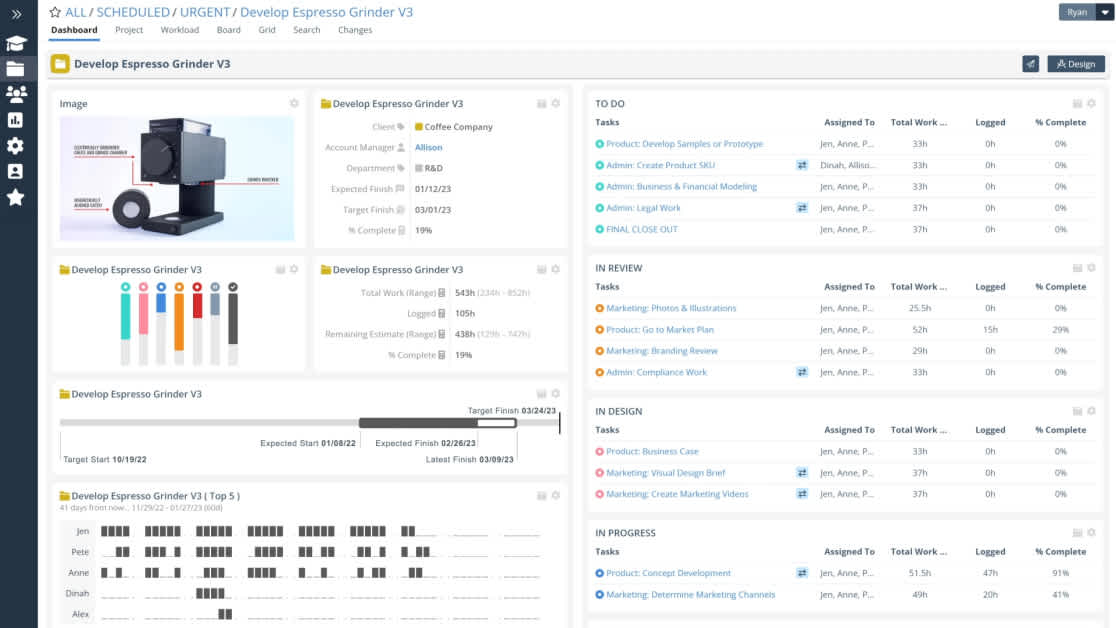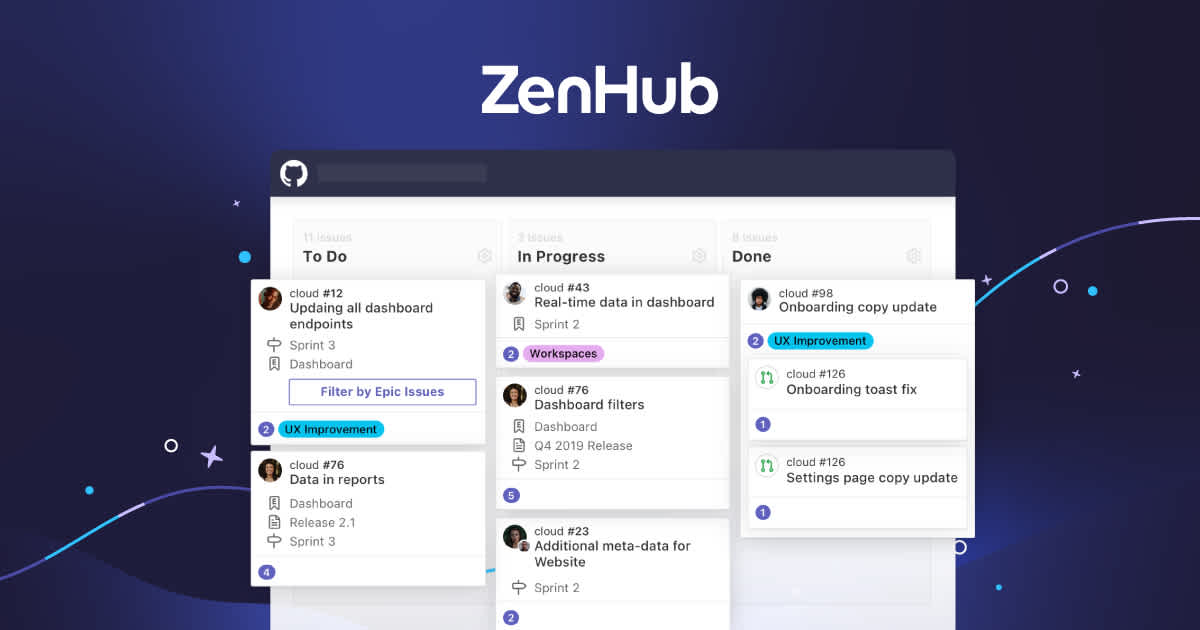Top 10 Project Management Apps for Agile Teams
ByJulian Gette
Workast publisher
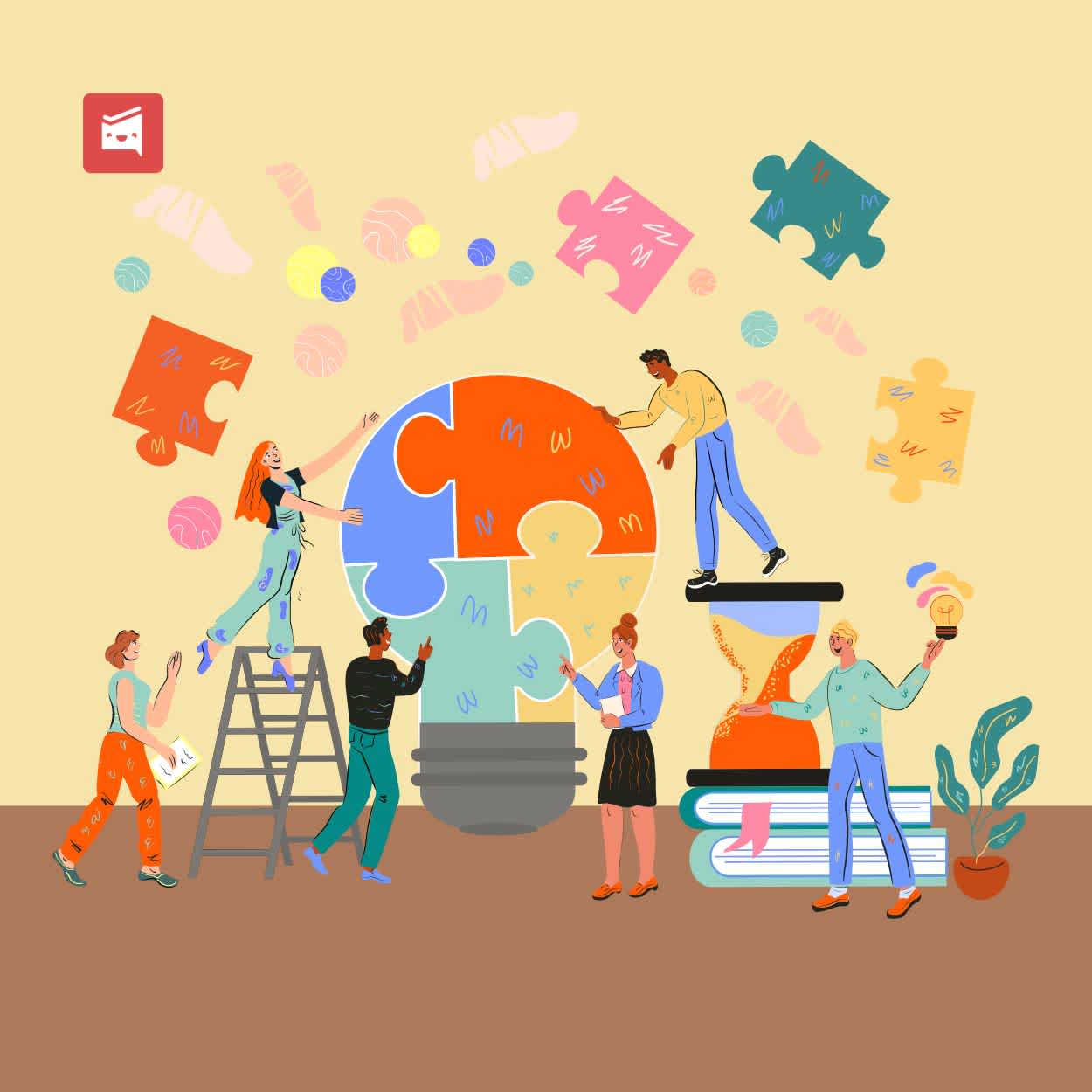
Workast publisher
Collaboration tools have evolved into dynamic project management hubs, blurring the lines between Project Management Software (PMS) and traditional time management tools. Striking the perfect balance of functionality and simplicity is crucial for agile teams, whether steering fully remote collaborations or thriving in shared workspaces. Discover the project management app that can elevate your team's productivity, collaboration, and project success.
Agile project management is an iterative approach to managing projects, primarily used in software development but increasingly applied in various industries. It emphasizes flexibility, collaboration, customer feedback, and continuous improvement. The Agile methodology contrasts with traditional project management approaches, which are often more rigid and linear in nature.
Key principles of Agile project management include:
Iterative Development: Agile projects are divided into small, manageable increments called iterations or sprints. Each iteration typically lasts from one to four weeks and results in a potentially shippable product increment.
Customer Collaboration: Agile teams prioritize customer satisfaction by involving customers or stakeholders throughout the project. This collaboration ensures that the project delivers value aligned with customer needs and expectations.
Adaptive Planning: Agile projects embrace change and uncertainty by continuously adapting to evolving requirements, priorities, and market conditions. Rather than creating a detailed plan upfront, Agile teams focus on short-term planning and adjust their plans as needed.
Cross-functional Teams: Agile teams are self-organizing and cross-functional, meaning they include members with diverse skills and expertise necessary to deliver the project's objectives. This structure fosters collaboration, creativity, and accountability within the team.
Continuous Improvement: Agile promotes a culture of continuous improvement, where teams regularly reflect on their processes, practices, and outcomes to identify areas for enhancement. This feedback loop allows teams to learn from experience and optimize their performance over time.
Emphasis on Delivering Value: Agile prioritizes delivering working products or features that provide tangible value to customers. By focusing on delivering high-value items early and frequently, Agile projects mitigate risks and maximize return on investment.
Common Agile frameworks and methodologies include Scrum, Kanban, Lean, Extreme Programming (XP), and Dynamic Systems Development Method (DSDM). While each framework has its unique practices and terminology, they share the core principles of Agile project management outlined above.
Overall, Agile project management emphasizes flexibility, adaptability, collaboration, and customer-centricity to deliver successful projects in today's dynamic and rapidly changing business environment.
In Agile project management, ceremonies are recurring meetings or events designed to facilitate communication, collaboration, and alignment within the team. The main ceremonies in Agile typically include:
Sprint Planning: A meeting at the beginning of each sprint where the team plans the work to be done during the sprint. This includes selecting user stories or backlog items to work on and estimating the effort required.
Daily Stand-up (or Daily Scrum): A brief daily meeting where team members provide updates on their progress since the last stand-up, discuss any obstacles or blockers, and plan their activities for the day. It's a time-boxed event, usually lasting around 15 minutes.
Sprint Review: A meeting held at the end of each sprint where the team demonstrates the completed work to stakeholders and gathers feedback. This allows stakeholders to provide input and helps the team ensure they're delivering value.
Sprint Retrospective: A meeting held at the end of each sprint where the team reflects on their processes, identifies what went well and what could be improved, and defines action items for the next sprint. It's an opportunity for continuous improvement.
Backlog Refinement (or Backlog Grooming): A recurring activity where the team reviews and prioritizes items in the product backlog, breaks them down into smaller, more manageable tasks, and ensures they are ready for selection in future sprints.
These ceremonies help Agile teams stay aligned, focused, and adaptable throughout the project lifecycle, fostering collaboration and continuous improvement.
Agile teams benefit from project management software by centralizing collaboration, enhancing transparency, and streamlining task management. These tools enable real-time communication, facilitate sprint planning, and provide visibility into project progress, ensuring alignment and accountability among team members. With features for tracking tasks, managing resources, and generating reports, project management software empowers Agile teams to deliver value incrementally, adapt to change, and continuously improve their processes.
One-glance Overview:
Customizable dashboards offering a visual feast of project scope, tasks, responsibilities, and workflows.
Calendar and Scheduling:
Efficient tracking, prioritization, and management of project schedules.
Resource Management:
Tools for revealing resource availability gaps and facilitating adjustments.
Collaboration Tools:
Shared calendars, group chats, document sharing, chat forums, and team email for seamless communication.
Ease of Use:
Intuitive interfaces, shortcuts, and excellent customer support for seamless onboarding.
Budget Planning:
Features for setting budgets, tracking expenses, generating invoices, and running financial forecasts.
Task Management:
Automated invoicing and support for recurring tasks.
Client Management:
Keeping clients informed without compromising confidential information.
Workast is a versatile tool that offers agile teams a robust platform for project management. Through its intuitive interface and integration with popular communication platforms like Slack, Workast facilitates seamless collaboration and communication among team members. One of its key features is task management, allowing teams to create, assign, and track tasks within the context of their projects. This aligns well with the agile methodology's emphasis on breaking down work into manageable increments and fostering transparency within the team. With Workast, agile teams can easily prioritize tasks, set deadlines, and monitor progress, thereby enhancing their ability to adapt to changing requirements and deliver value to stakeholders efficiently.
Furthermore, Workast provides agile teams with valuable insights and analytics to improve their project management processes continually. By generating reports on task completion rates, team productivity, and bottlenecks, Workast enables teams to identify areas for improvement and optimize their workflows. Additionally, its integration with project tracking tools like Trello and Jira allows for seamless coordination between different aspects of project management. Overall, Workast empowers agile teams to streamline their project management efforts, increase collaboration, and achieve better outcomes in an ever-evolving business landscape.
Jira Software, developed by Atlassian, stands as a cornerstone for agile teams seeking efficient and streamlined project management. With its robust features tailored to agile methodologies, Jira Software empowers teams to embrace flexibility and collaboration throughout the project lifecycle. The platform provides Scrum and Kanban boards, enabling teams to visualize and manage their work in a way that suits their workflow. Sprint planning becomes a breeze with Jira's intuitive interface, allowing teams to prioritize and allocate tasks effectively. Advanced reporting features offer valuable insights into project progress, helping teams make data-driven decisions for continuous improvement.
Additionally, Jira Software excels in integration capabilities, allowing seamless collaboration with other tools and applications. This flexibility ensures that agile teams can leverage their preferred tools for various aspects of their workflow while maintaining a centralized hub for project management in Jira. Whether it’s creating user stories in Jira, managing backlogs, or conducting retrospectives, Jira Software provides a comprehensive solution that aligns with the agile principles of adaptability, transparency, and collaboration. Overall, Jira Software's rich feature set and adaptability make it an invaluable asset for agile teams striving for efficiency and success in their projects.
ClickUp proves to be a versatile and comprehensive project management tool that significantly aids agile teams in navigating the complexities of their projects. With a customizable and intuitive interface, ClickUp allows agile teams to tailor their workspace according to their specific needs, fostering a collaborative and adaptable environment. The platform seamlessly combines task management, document collaboration, and goal tracking, making it a one-stop solution for agile teams looking to streamline their workflows. ClickUp's agile capabilities include features like time tracking and sprint views, providing teams with the flexibility to manage their projects efficiently while adapting to the dynamic nature of agile methodologies.
The user-friendly nature of ClickUp ensures that teams can easily prioritize tasks, track progress, and collaborate in real-time. Its adaptability to various agile frameworks, such as Scrum or Kanban, makes it suitable for teams with diverse project management preferences. ClickUp's ability to centralize project-related activities, coupled with its intuitive design, empowers agile teams to focus on their goals without being bogged down by complex tool navigation. Overall, ClickUp emerges as a valuable asset for agile teams seeking a holistic project management solution that combines flexibility, ease of use, and powerful collaboration features.
Airtable offers agile teams a unique and flexible approach to project management by combining the familiarity of a spreadsheet with the functionality of a database. This distinctive blend empowers teams to customize their workflows according to the specific requirements of agile methodologies. Agile teams can create kanban-style boards, set up collaborative tasks, and leverage a visual interface for streamlined project management. Airtable's adaptability allows teams to configure their workspace to match their preferred project management style, making it a creative choice for those with diverse needs within the agile framework.
The visual and collaborative nature of Airtable supports agile teams in maintaining transparency and coordination throughout the project lifecycle. With the ability to customize fields, organize data, and collaborate in real-time, teams can easily manage sprints, track progress, and adapt to changing project requirements. Whether it's backlog prioritization, sprint planning, or collaborative decision-making, Airtable provides agile teams with a dynamic platform that facilitates efficient communication and fosters adaptability in the fast-paced world of agile project management.
Teamwork offers agile teams a comprehensive suite of tools designed to enhance project management efficiency. With features ranging from task tracking to milestone management, Teamwork provides agile teams with a centralized platform to plan, execute, and monitor projects collaboratively. The user-friendly interface ensures that agile teams can easily adopt and integrate Teamwork into their workflows, promoting seamless communication and coordination.
One of Teamwork's standout features for agile project management is its Gantt chart views, allowing teams to visualize project timelines, dependencies, and progress. This visual representation aids in effective planning and resource allocation, crucial aspects of agile methodologies. Additionally, Teamwork's flexibility accommodates various agile frameworks, enabling teams to tailor their approach to suit Scrum, Kanban, or a hybrid methodology. Overall, Teamwork empowers agile teams with the tools they need to streamline their processes, boost collaboration, and achieve project success.
Podio stands out as a flexible collaboration platform that can be tailored to the specific needs of agile teams engaged in project management. Its customizable nature allows teams to create custom apps, automate processes, and integrate seamlessly with their preferred tools. For agile teams that often have unique workflows and requirements, Podio offers the freedom to design a workspace that aligns perfectly with their project management methodology.
Agile teams can leverage Podio's ability to build custom apps for tasks like sprint planning, backlog management, and daily stand-ups. The platform's automation features enable teams to streamline repetitive processes, reducing manual effort and enhancing overall efficiency. Podio's collaborative environment ensures that team members can easily communicate, share updates, and track progress in real-time, fostering a sense of transparency and alignment. With its adaptability and robust collaboration tools, Podio provides agile teams with a platform that evolves with their changing needs, making it a valuable asset in the dynamic landscape of agile project management.
Targetprocess is designed to be a comprehensive solution for agile teams engaged in project management, offering a visual and adaptable platform to manage complex work effectively. One key strength of Targetprocess lies in its flexibility to accommodate different agile frameworks, including Scrum, Kanban, SAFe, and more. This adaptability ensures that teams can tailor their workflow to align with their specific project management methodology, allowing for a seamless integration of Targetprocess into their existing processes.
Agile teams benefit from Targetprocess's advanced reporting and visualization capabilities, which provide insightful and real-time data on project progress. The platform's visualizations, such as interactive dashboards and customizable reports, empower teams to gain a clear overview of tasks, dependencies, and bottlenecks. With features like backlog management, sprint planning, and release tracking, Targetprocess ensures that agile teams can efficiently plan, execute, and monitor their projects. The platform's emphasis on visualizing complex work makes it particularly suitable for projects with intricate structures, enabling teams to manage their workflow with precision and agility.
Notion serves as an all-in-one workspace that can significantly enhance project management for agile teams. Its versatility lies in its ability to seamlessly integrate various aspects of project planning, documentation, and collaboration within a unified platform. Agile teams can leverage Notion to create centralized hubs for collaborative work, fostering streamlined communication and knowledge sharing. The platform's flexibility allows teams to customize workflows, making it adaptable to different agile methodologies such as Scrum or Kanban.
Notion's robust task management features enable agile teams to prioritize, assign, and track tasks efficiently. The platform supports the creation of dynamic and interconnected databases, providing a structured way to organize project-related information. With features like kanban boards, calendars, and to-do lists, Notion ensures that teams have the tools they need to visualize project progress and manage work effectively. Additionally, the collaborative nature of Notion facilitates real-time updates, comments, and feedback, promoting a sense of transparency and accountability within agile teams. Whether planning sprints, documenting user stories, or conducting retrospectives, Notion's comprehensive capabilities make it a valuable asset for agile project management.
LiquidPlanner stands out as a dynamic and adaptive project management tool that caters to the unique needs of agile teams. One of its key strengths lies in dynamic scheduling, allowing teams to navigate the uncertainties inherent in agile projects. LiquidPlanner embraces a priority-based planning approach, enabling teams to focus on what matters most at any given time. This flexibility proves crucial for agile methodologies, where priorities can shift rapidly based on changing requirements and stakeholder feedback.
The platform's emphasis on dynamic scheduling means that tasks are not bound by rigid timelines but are instead scheduled based on priority and resource availability. This dynamic approach aligns well with agile principles, as it accommodates changes in scope or project priorities without compromising overall project timelines. Additionally, LiquidPlanner provides real-time collaboration features, enabling agile teams to communicate, share updates, and collaborate seamlessly. With features like task prioritization, resource management, and insightful analytics, LiquidPlanner empowers agile teams to maintain agility in their project workflows, facilitating efficient adaptation to evolving project dynamics.
ZenHub, seamlessly integrated within GitHub, is specifically designed to cater to the needs of agile development teams. As an extension for GitHub, ZenHub provides a set of robust project management features that enhance the capabilities of GitHub for agile workflows. One of its standout features is the ability to create and manage task boards directly within the GitHub interface, facilitating a visual and intuitive representation of project tasks. This integration ensures that agile teams can seamlessly transition between coding and project management without the need for separate platforms.
Backlog prioritization is streamlined with ZenHub, allowing teams to efficiently plan sprints and allocate resources based on GitHub issues. This close integration with GitHub repositories provides real-time updates, ensuring that the development and project management aspects are in sync. Additionally, ZenHub offers burndown charts, velocity tracking, and release reports, providing agile teams with valuable insights into their project progress and performance. By enhancing GitHub with these project management capabilities, ZenHub empowers agile teams to maintain a cohesive and efficient workflow, fostering collaboration between developers and project managers within a familiar environment.
In the ever-evolving landscape of agile work, selecting a project management app tailored to your team's needs is a strategic necessity. As affordability and accessibility increase, these tools cater to agile teams of all sizes, providing an excellent opportunity to boost productivity. Embark on the journey of optimizing your team's workflow by carefully considering your unique needs and leveraging the capabilities of these top project management apps for agile teams.

